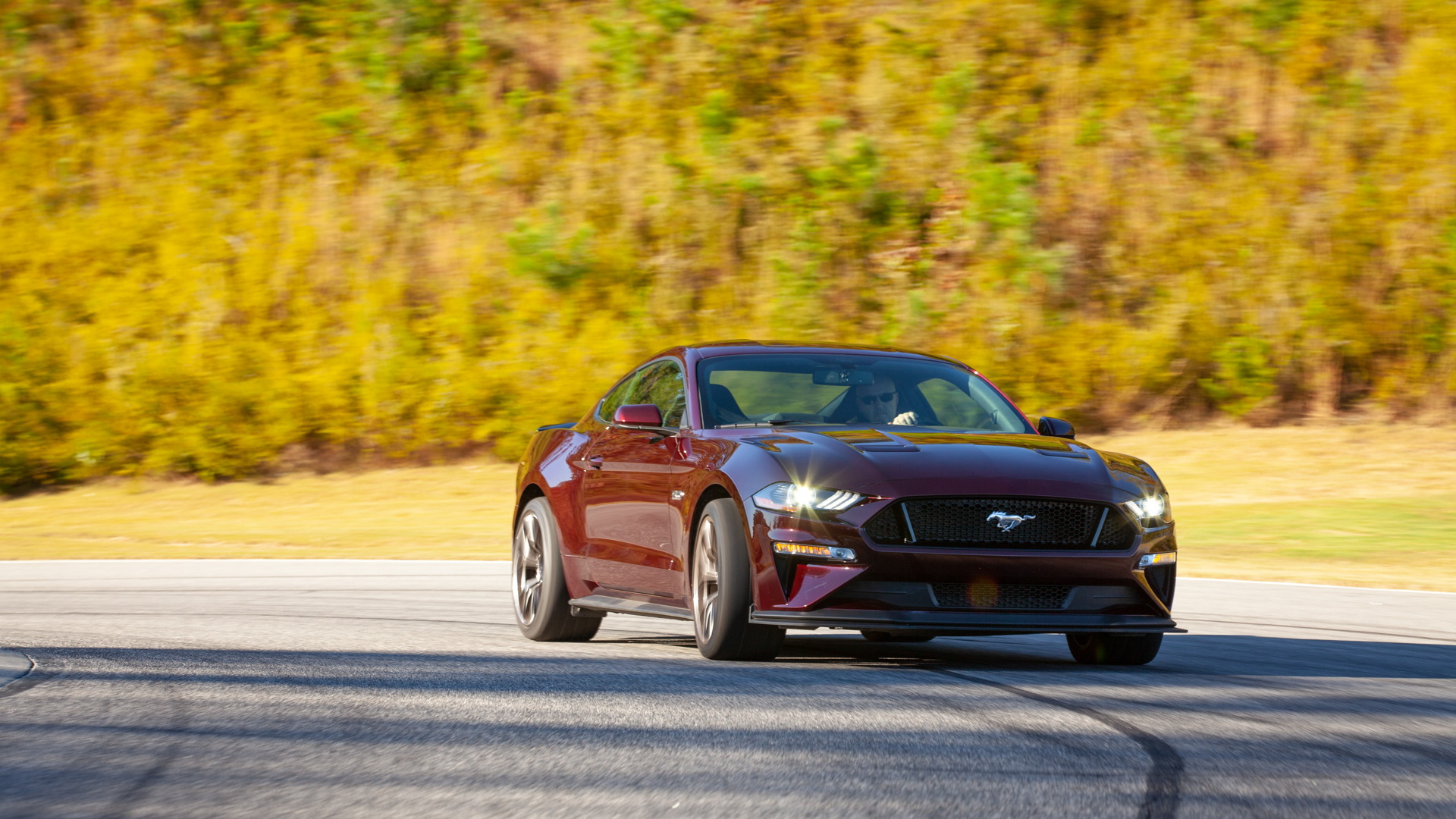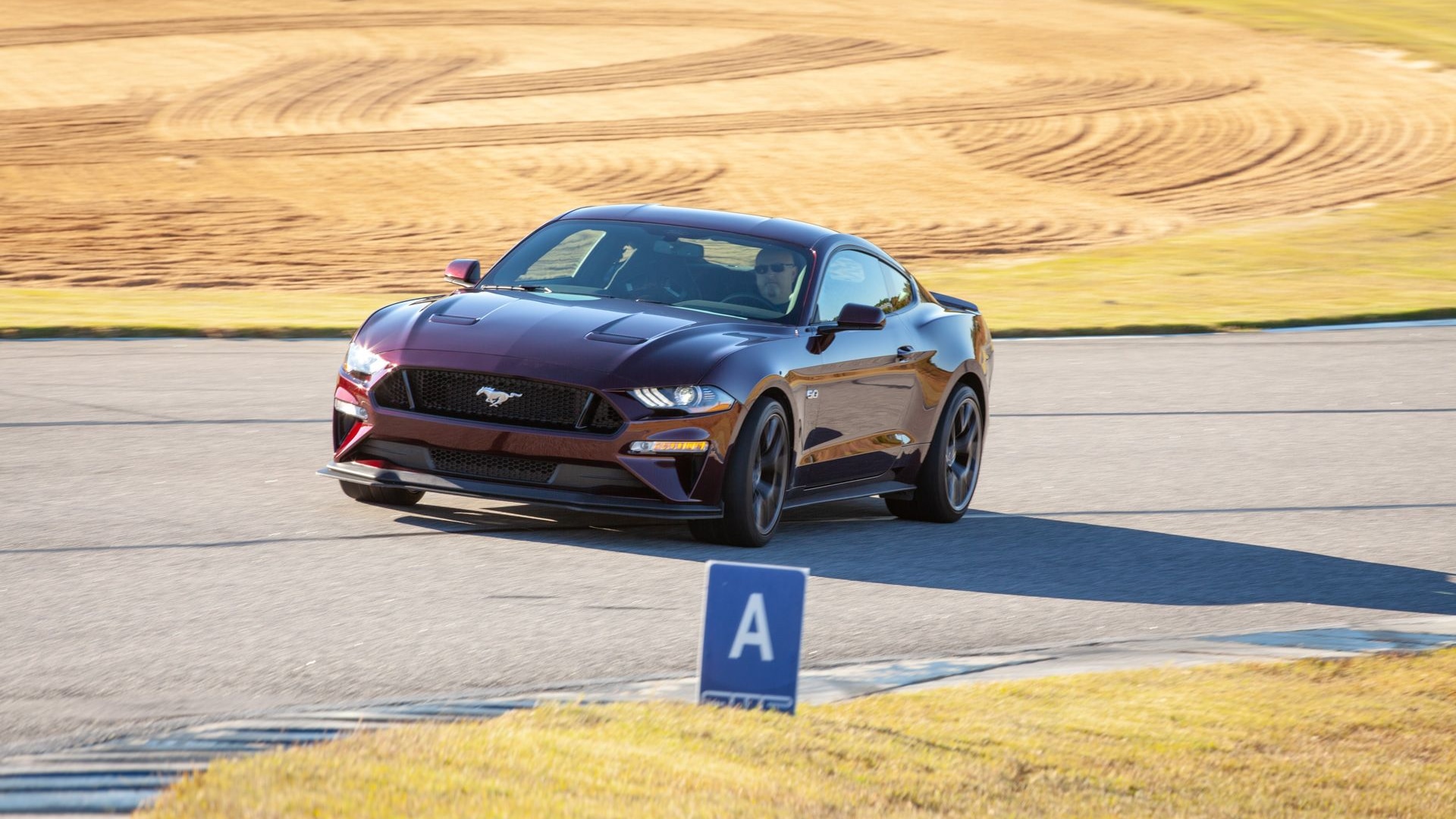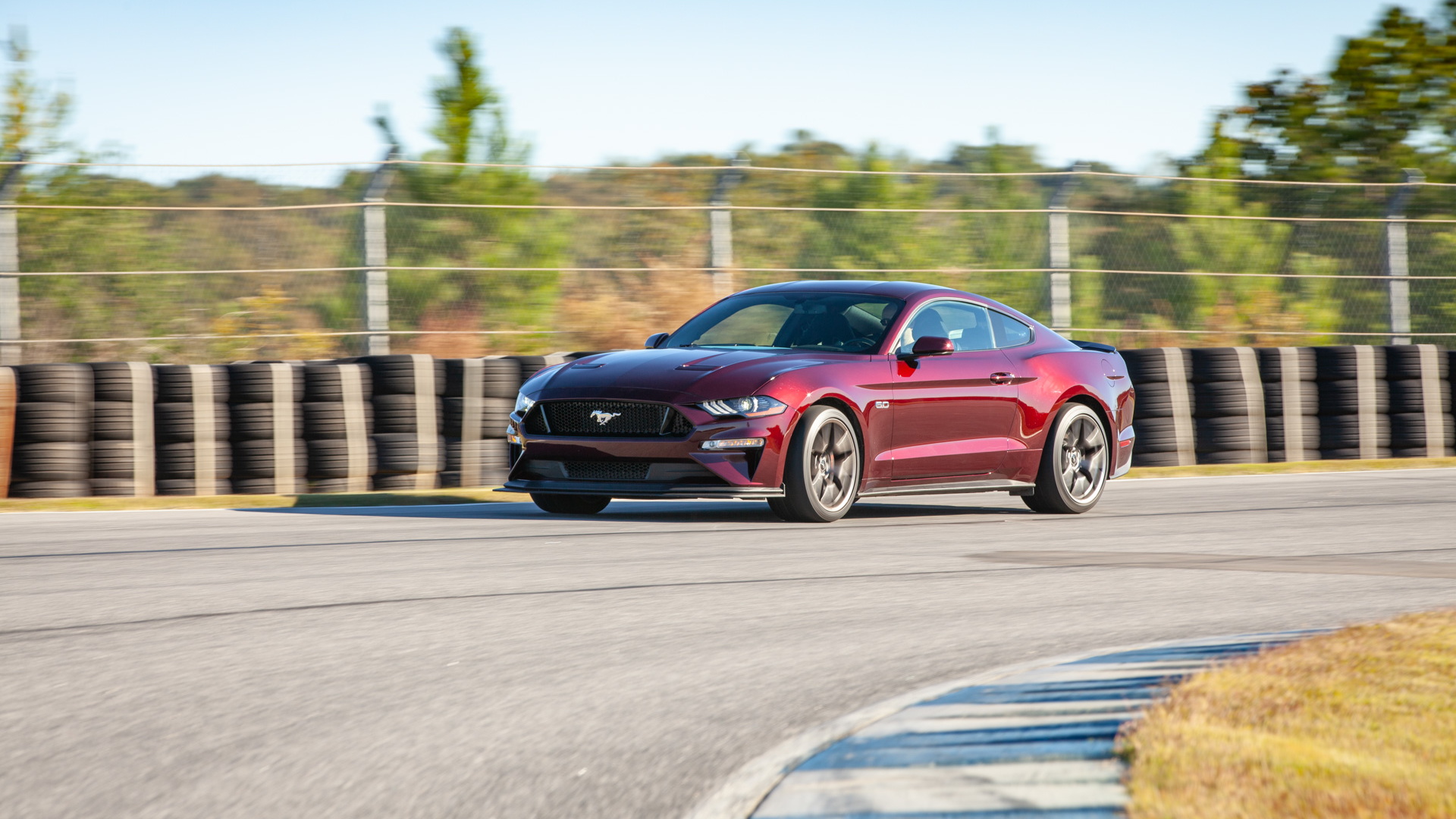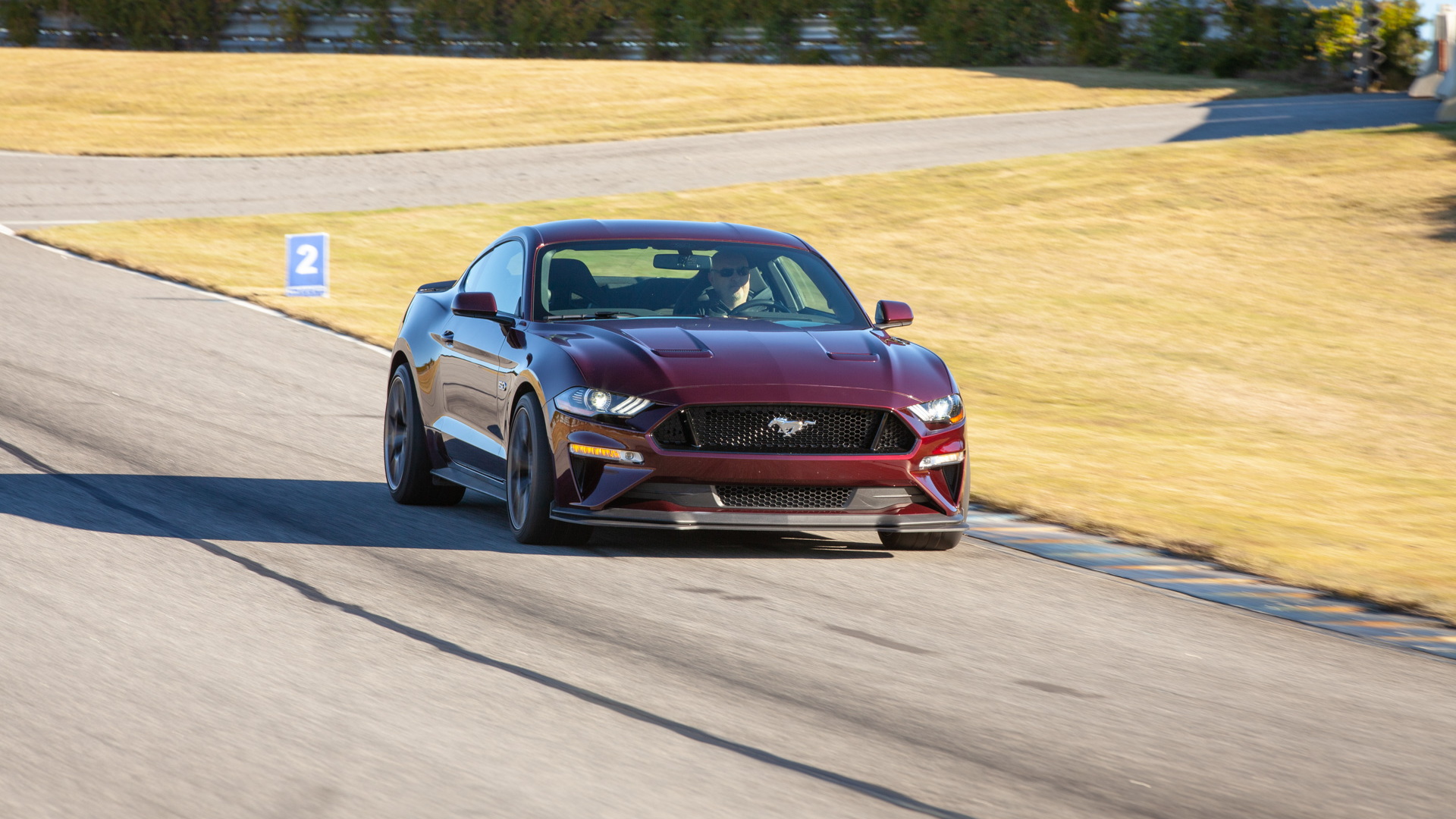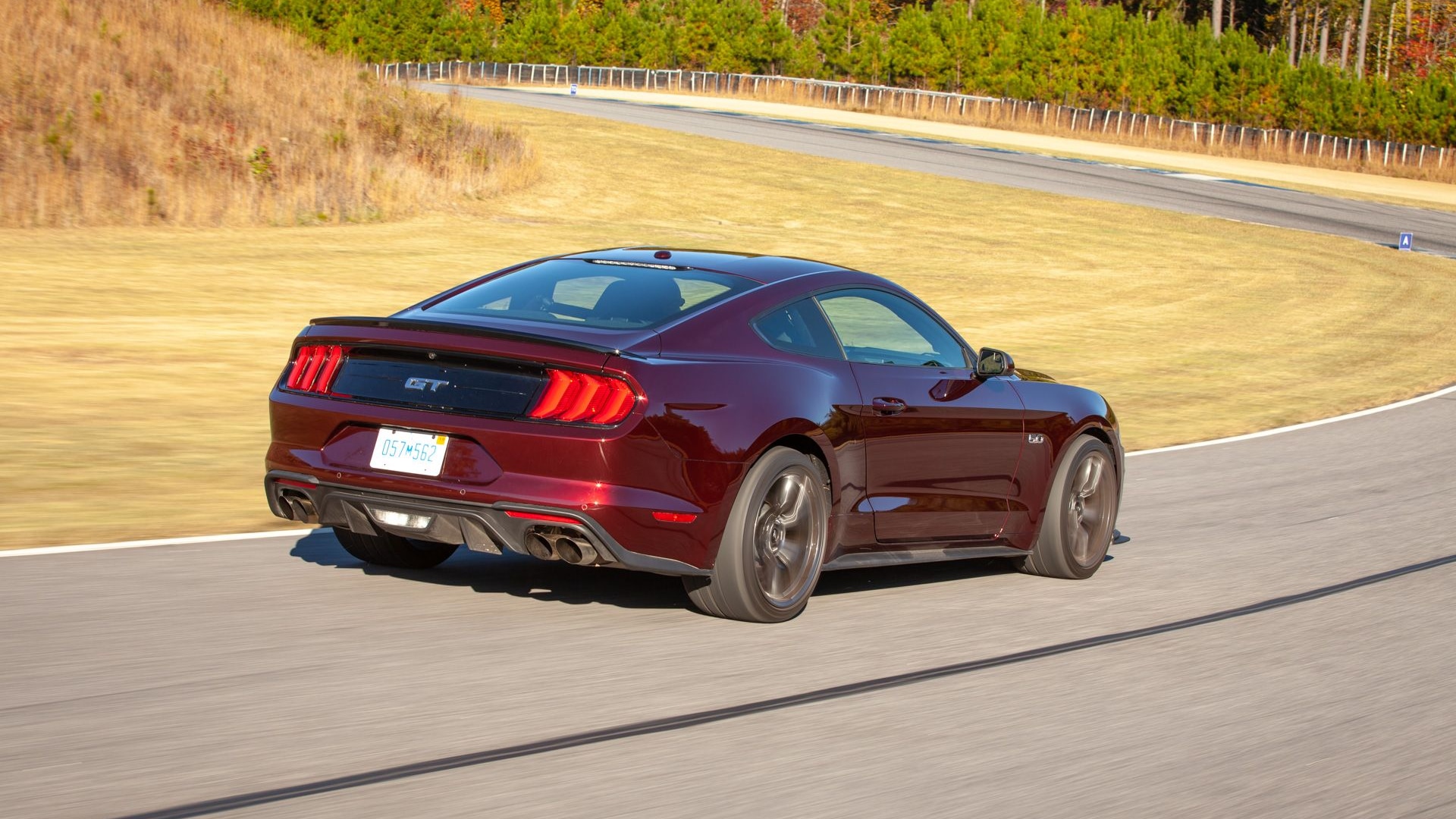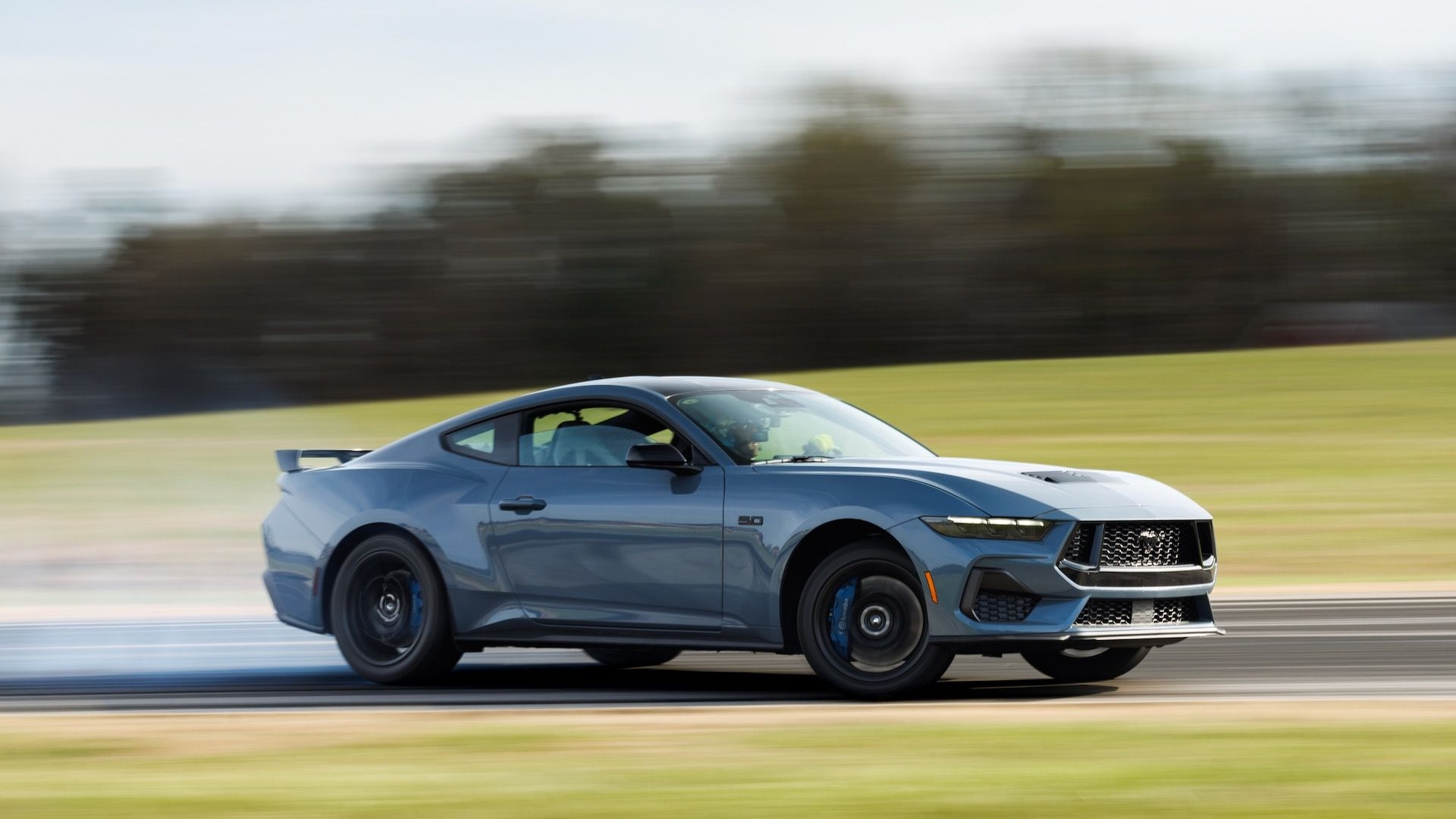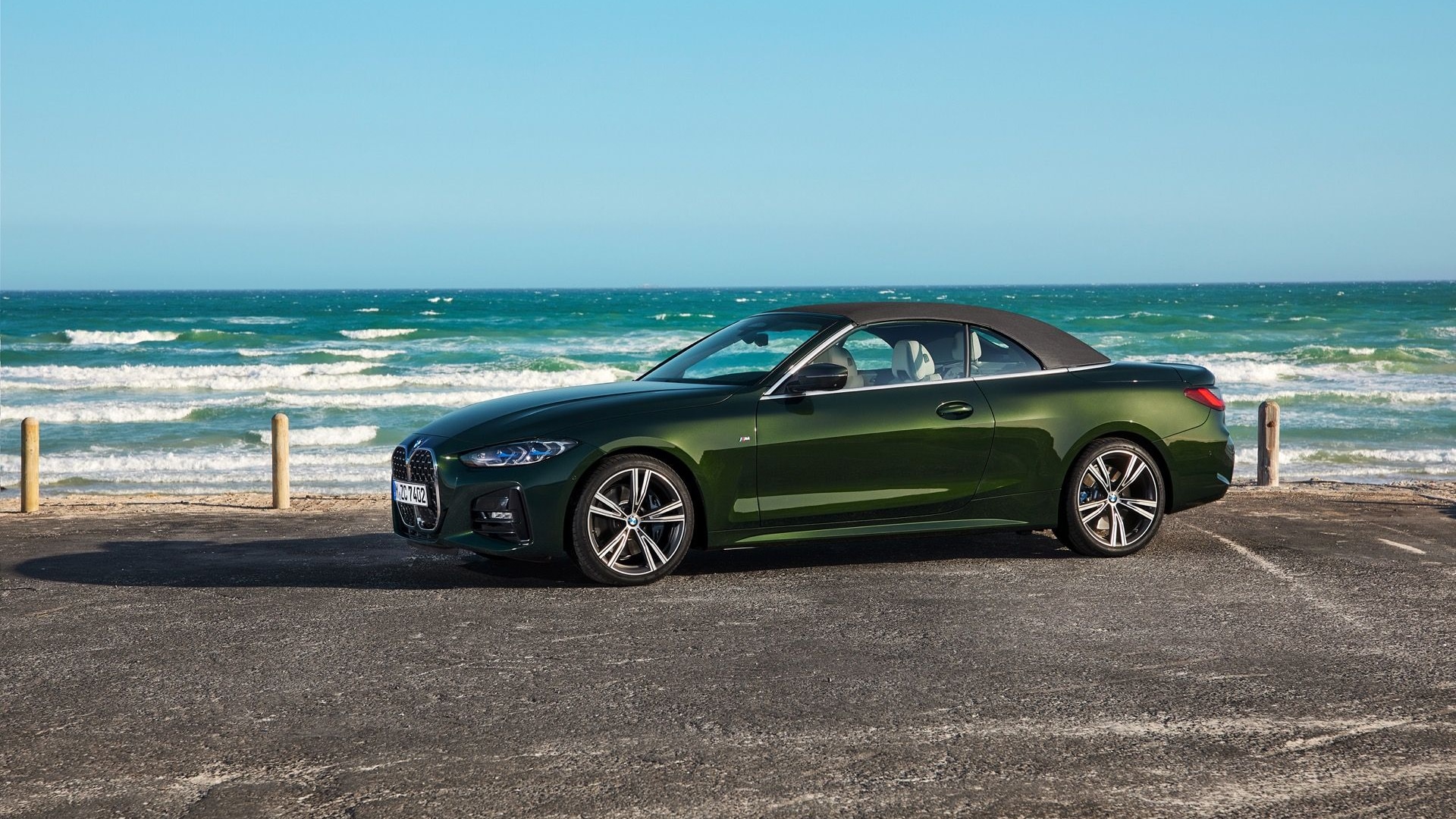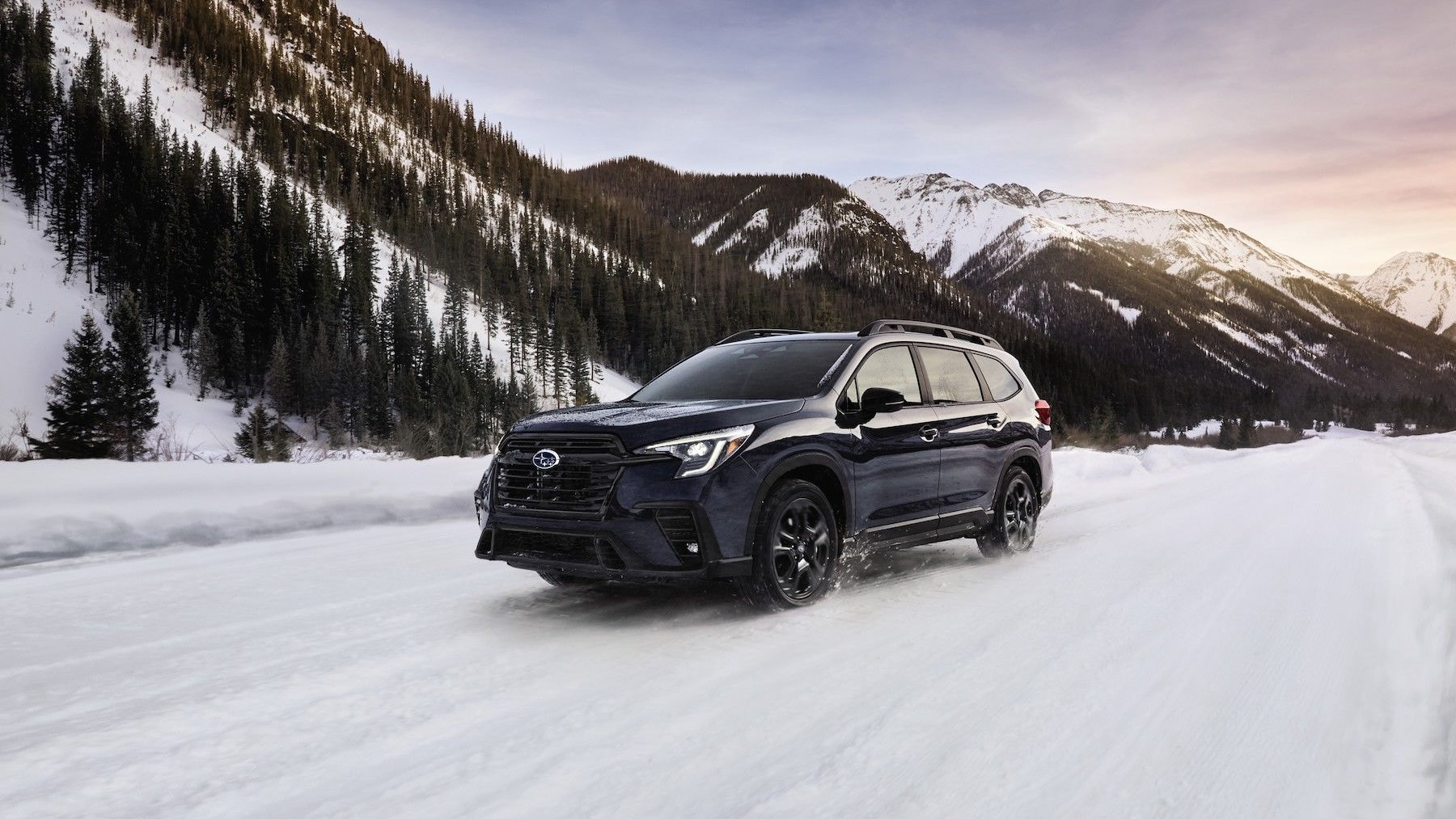The V-8 engine has defined American performance since Henry Ford stuck a low-cost flathead V-8 in the 1932 Ford. It made cars faster than their brakes and suspensions could handle during the muscle car era of the 1960s, got choked during the gas crisis of the 1970s, and came on strong again with a return to speed and power in the last 20 years.
The 460-horsepower 5.0-liter V-8 in the current Mustang GT puts American muscle within reach of the automotive enthusiast. But that type of rip-snortin’, exhaust burblin’, gas-burnin’ performance could soon come to an end.
READ NEXT: What does the Ford Mustang mean to America?
American emissions standards will tighten through 2022, but plans for further regulations through 2025 have been scuttled. However, the rest of the world will put stricter controls on emissions from greenhouse gases. That means the gasoline engine’s days are numbered. Ford even has said it could use the Mach 1 name, a sacred Mustang moniker, for an electric vehicle.
Electric power is clearly the future, but the gasoline engine will hang on. For how long, though, and in what form?
While there are no clear answers to these questions, we decided to take them on anyway. Each member of our staff looked into their crystal balls to predict the future of gasoline performance. Green Car Reports’ Senior Editor Bengt Halvorson had more fun with the idea than the rest of us. His narrative sets readers in 2040 and imagines what a Shelby Mustang might be like 22 years into the future. As you’ll see from the comments below, we share several ideas, but even those who follow the industry closely disagree about the future of the gasoline engine.
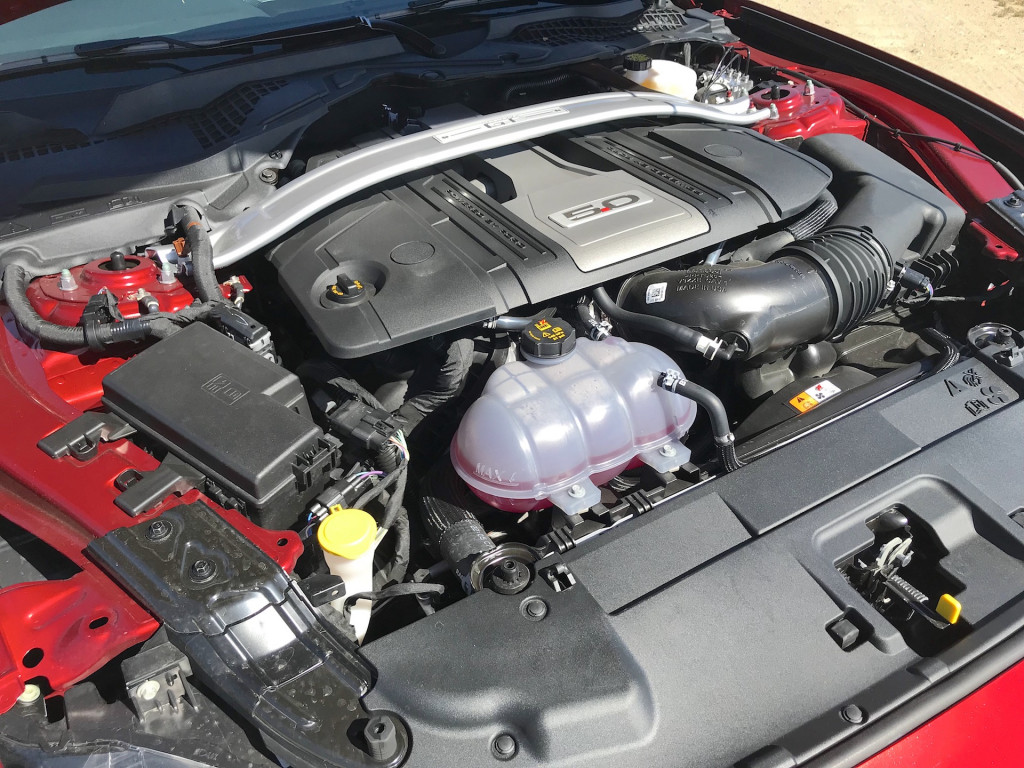
2018 Ford Mustang GT
Editorial Director Marty Padgett
Live by the battery, or die by the battery.
The looming fact of electrification doesn’t mean the end of performance, but America’s new-car fleet will almost surely wave goodbye to gasoline-powered engines in my lifetime. And I’m old enough to remember when Mustangs had Pinto front ends.
China will soon declare gas engines a thing of the past. When that happens, carmakers will either have to decide to switch over to batteries for everything—economics of scale and whatnot—or to huddle together in unique and interesting ways. GM and Ford have built transmissions together; if they decide there’s one last hurrah left in a gas-powered Camaro and Mustang, might they Don Quixote out one more internal-combustion engine for both their pony cars?
More likely, they’ll decide to pull the plug, as they switch to the plug.
It’s why we’re talking about it here and now. This could be the last pure gas-powered Mustang in history, and that’s a moment worth marking.
Electrified performance will only make cars like the Mustang better off the factory floor. While air pollution gets concentrated where it can be more easily treated, enthusiasts will be treated to instant torque, home refueling off-hours, emergency-only stopovers at charging stations (which may be Starbucks, not a Citgo with a restroom key attached to, hmm, a chainsaw?), and cars with hundreds fewer parts to go wrong.
Life will get tougher for tuners. An entire SEMA subculture based on fixing the Mustang’s rear suspension could find itself latched on to the rapidly aging cars of the past. A few collectors will grow rich quickly. The rest will not.
The magic switch-on date won’t look like that; gas cars will ply the roads alongside battery cars, and as another editor reckons, gas-engine cars will see fuel prices rise and will become playthings trotted out for occasional track days or country-road runs. Economics will dictate the switch, more than politics, but never rule out the ruling class to break up a great party (see: Prohibition).
The rest of us will be treated to a once-in-a-generation revolution, one in which the fundamental idea of performance comes from the grid, not from the ground.
Buckle up.

2018 Ford Mustang GT and 2019 Ford GT
Motor Authority Senior Editor Kirk Bell
Gasoline engines will live on as long as they can, and the good news for enthusiasts is performance cars will be the last holdouts. Various automakers have said that they will continue to use internal combustion engines because the sounds they make contribute to the soul of a sports car.
Still, electric powertrains are coming, even for performance cars. The instant torque and efficiency they offer are just too alluring.
America will hold onto the V-8 engine the longest, with the Mustang, Camaro, Corvette, Charger, and Challenger as the last holdouts for naturally aspirated and supercharged power—full-size trucks should tag along for the ride, too. Former FCA CEO Sergio Marchionne even said his company would pay fines for falling short of CAFE requirements if need be. As long as CAFE rules hold at the 2022 standard, these engines could hang on much longer than was expected a few years ago, though they could also be supplemented by electric boost.
Germany is already using all the tricks. The country’s automakers are taking a more integrated approach by turbocharging and electrifying their engines. The 48-volt system in the new Mercedes-Benz CLS is the first warrior on this front. It employs an electric supercharger to create boost at low rpm and uses a motor to run the air conditioner and water pump instead of sapping energy from the engine. But Germany likes its high-end sports cars, so expect its luxury marques to hang on to the sound and fury of internal combustion even as they begin switching over to electric cars.
The Mercedes-AMG One and Porsche 919 Hybrid race car prove that big power can be derived from small engines supplemented by electrification. While that’s state-of-the-art race car technology, it can trickle down into more mainstream performance cars.
Still, as Europe moves forward on emissions standards, likely without the U.S., European automakers will be forced to go all-electric. Expect several battery electric offerings from each European automaker by 2025, with a complete transition as early as 2035 but more likely around 2050.
Japan could be more conservative, with smaller turbocharged engines from Honda, but perhaps some larger, force-fed V-8s from Lexus. Japan likely will find itself in the same position as Europe, and electric powertrains will eventually take over completely in the same timeframe.

2018 Ford Mustang GT Peformance Package Level 2
Managing Editor Aaron Cole
The start straight at Circuit of the Americas in Austin, Texas, rises like flames licking a porterhouse, it rises more than 90 feet from the checkered finish line less than a half-mile behind it.
It’s dramatic and impressive, a testament to Texas’s outsized everything.
For Formula One, multi-million-dollar rockets and their hyper-trained jockeys, it’s a run from 0 to 150 to nearly 0 mph in fewer than 5 seconds. The machines and their riders are rarer sights than a well-done ribeye in Texas.
At least for now.
READ NEXT: Ford GT and Ford Mustang GT: A celebration of performance
Performance vehicles and gasoline have gone together for more than a century now, and even though a gallon of gasoline has a stupefying power density, that’s nothing compared to what’s possible for batteries and electricity.
Grip, physics, friction, and heat are the only barriers to electricity’s power potential. Already, we’ve seen electric luxury sedans accelerate faster than falling off a rooftop, and they’re going faster and farther.
Soon enough, electric performance sedans will bring F1-levels of performance to our own cul-de-sacs, turning neighborhoods into makeshift Mulsanne straights, and commutes into stoplight grands prix.
There’s a legitimate question for others to answer regarding “can” and “should” as it relates to battery-electric cars and their potential for speed and performance. Because over the past century, gasoline’s suck-squeeze-bang-blow cycles have afforded precious seconds for others to act and react. Electricity won’t wait that long.
In 10 years, performance will be unrecognizable to today’s gas-fueled gearheads. Tomorrow’s electrified hypercars will share less in common with today’s hypercars than today’s F1 race cars share with quarter horses.
That’s a future worth looking forward to for performance fanatics.

Interactive Content Manager Joel Feder
Despite the picture many automakers paint these days, the gasoline engine isn’t going anywhere soon.
Over time cars will become more efficient, the downsizing trend will spread further throughout the industry, and so will turbocharging.
The power wars are in full force, but eventually we’ll hit a peak.
Electrification will play a role and 48-volt mild-hybrid systems will go mainstream. Mass-market cars like the Jeep Wrangler and Ram 1500 already offer the tech.
The writing is on the wall as a hybrid Ford Mustang is on its way, and an all-electric performance crossover may be coming as well.
Change isn’t all bad. Electrification provides instant torque, and torque vectoring via individual electric motors is a boon to handling.
One big downside? The visceral feel and authoritative sound of a big, loud gasoline-powered engine will go away over time.
Performance vehicles and gasoline aren’t going anywhere in my lifetime, or yours, but their shapes, and more importantly, their powertrains, are about to become a lot more efficient without giving up an ounce of performance.

2018 Ford Mustang GT
The Car Connection Senior Editor Andrew Ganz
Dandy horse riders—an early name for 19th century bicycles—couldn't fathom what they were going to do for real horses. Their rudimentary bicycles inspired personal transportation, and once Karl Benz and his compatriots strapped engines to carriages, horses transitioned into an equestrian hobby.
Gas-fueled automobiles are headed down a similar path.
Automobiles that can drive themselves are inevitable, and they’ll be electric. That’s a given. Look for gasoline automobiles to become nostalgia-laced playthings ready for a romp in certain places. Just as palominos aren’t allowed on interstates, cool cars like the Mustang, the AMG GT, and the Lexus LFA may find themselves restricted to automotive playgrounds like racetracks, off-road courses, and perhaps rural roads.
DON'T MISS: Terlingua, Texas: Where Carroll Shelby’s rat pack let their Mustangs run wild
It’s hard to imagine how the gas engine will survive as propulsion for personal transportation, but it has a future as a fun-providing machine for a limited audience of enthusiasts.

Ford Mustang Hybrid teaser
Green Car Reports Senior Editor Bengt Halvorson
Blue Oval Platinum members feeling a little nostalgic for the past and able to buy this $285,000 car—about double the official list price on the Mustang—will find quite the blend of past and present in the 2040 Mustang Shelby GT, a celebration of the Mustang’s 75th anniversary.
With it you get a steering wheel, old-style two-pedal driving, and a good ‘ol American V-8, and giddyup like it’s 2015. And since engine development basically stopped in the 2020s, it’s like having a piece of vintage iron under the hood.
Ford has tried to build as much retro into the Shelby GT as it can. Efficiency requirements for plug-in modes made mechanical transmissions a thing of the past, but the Shelby GT does a good job faking it, revving the engine in the cadence of a transmission (choose from 3 to 10 speeds). All the energy is captured via a high-efficiency generator, with energy stored away in the solid-state battery embedded in the floor. Power is delivered by hub motors at all four wheels—pretty much the standard today after smart tires helped eliminate concerns over unsprung mass (and, unfortunately, burnouts).
You still have Ford’s BluePilot on the ready, with the steering wheel and pedals disappearing away to the virtual roomscape of your choice. The enthusiasm of a holographic Carroll Shelby in the passenger seat may seem a little tacky, but you can shut it off, and it overrides Henry, the ubiquitous and sometimes maligned Ford virtual assistant.
If you’re shelling out the money for the Shelby GT, you probably already have Ford’s Mustang Ranch home energy management system, or the equivalent. That’s a good thing, as with that gasoline-burning V-8, you’re going to need a lot of carbon credits.

2018 Ford Mustang GT
Green Car Reports contributor Eric Evarts
The world, and especially the United States and developing countries, will be burning gasoline for a while to come. The goal is to use dramatically less of it.
Gasoline has given us the essence of what makes cars great: the ability to go anywhere, any time, without regard for anyone else’s schedule. That aspiration is not going away.
But cars have gotten overpopulated in metro areas all over the world.
The key is to get gasoline out of our commutes and daily routines, which electric motors can do. That will eliminate the vast majority of gasoline consumed today, and it’s the low-hanging fruit.
My vision of the typical American two-car garage of the future has an electric commuter car such as the Chevy Bolt EV (or a more luxurious Tesla Model 3) on one side, and a plug-in hybrid SUV on the other. The EV serves as the daily commuter for one partner, the PHEV does daily duties in electric mode for the other and still serves as vacation getaway transportation on weekends to fulfill that dream of complete automotive freedom. Think about the fuel savings versus the lifestyle tradeoff that would require. The payoff would be huge; the convenience cost minimal.
I see a continuing need for fossil fuels to tow trailers and move freight. The batteries and electric drivetrains we have today aren’t good at that yet. They can move the load, but the batteries must be huge, and the charging stations frequent and powerful. That’s a long way off, especially considering how the electric grid would have to be expanded in very rural areas.
For the next decade or more, vehicles ranging from mid-size SUVs to full-size pickups, to medium- and heavy-duty trucks may use internal combustion engines for some duties. These engines will be more efficient, and many will be connected to hybrid systems, whether it’s full, series hybrids or 48-volt mild hybrids. Spark Plug Controlled Compression Ignition (a la Mazda Skyactiv-X) will be a big part of the gain, along with better transmissions and other technologies.
With a combination of these more efficient technologies, and the replacement of most daily car miles with purely electric ones, the U.S. can save most of the transportation fuel it burns today. We could eliminate oil imports and crucially leave trillions more barrels of oil to use in producing chemicals, medicines, plastics, and other materials that a growing and aging population will increasingly depend upon.
For two months, Motor Authority crisscrossed the U.S. in an automotive icon seeking stories about the Ford Mustang's place in American history. These are our stories from the road about its owners, its history, and its status as an evolving symbol of our relationship with cars in America.
